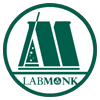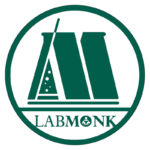[ps2id id=’background’ target=”/]
BACKGROUND
E. coli is a gram negative, rod shaped bacteria and is one of the common inhabitants of gastrointestinal tract of warm-blooded animals. But there is need of certain optimum condition for growth of E.coli and there are various parameters like temperature, glucose concentration and salt that affects the growth of E. coli. The growth of not only E. coli but also other microorganism depends on the required supply of suitable nutrients, which also varies in different species depending on their natural environmental adaptation. Although some species can grow under various range of conditions but some species have restricted requirements not only to food but also temperature, pH and other factors.
The basic objective of this experiment is to study the effect of this parameters on E. coli growth.
[ps2id id=’requirements’ target=”/]
REQUIREMENTS
Sample: E. coli stock culture
Media and chemicals: Nutrient broth
LB broth
Sodium chloride
Acetic acid
MES and HEPES
Others: Spectrophotometer
Colony counter
Incubator
Conical flask
Inoculating rod
Autoclave
[ps2id id=’procedure’ target=”/]
PROCEDURE
Effect of temperature
Take 1 ml of inoculants that has been serially diluted and dilute it again into ten-fold serial dilution level. Then 1 ml of this dilution is inoculated into pour plate culture.1 Make pour plate replicates of each dilution and incubate it at various temperature starting from 0oC to about 70oC. After incubating overnight take only those plate for calculating colony forming unit whose colony number is between 30 and 300. Then this number of colonies is multiplied with the dilution factor and then the bacterial count is calculated.2
Effect of pH
Take five set of 50 ml samples of the LB broth containing E.coli and buffer it with acetic acid at a pH of 4 and 5, with MES at pH 6 and HEPES at pH 7 and 8. Then take a 250 ml flask and transfer sample of each medium to this flask and then add 0.5ml of E.coli overnight culture. Then from each flask take sample at a time interval of 0, 0.5, 1, 2, 3 and 4 hours. Then measure the bacterial population in each sample by using a spectrophotometer at 595 nm. Then growth curves were plotted with each pH.3
Effect of various concentration of salt
Prepare nutrient broth and add different concentration of Nacl to this broth in a conical flask. Sterilize this at 121oC for about 15 min. Then allow the media with different salt concentration to cool down completely and then add a loop of pure E. coli from the stock culture. Then incubate this at 37oC for about 12 hours. Then after incubating check the flasks for turbidity. Then obtain the absorbance of each growth culture with varied Nacl concentration every hour continuously for eleven hours.4
[ps2id id=’conclusion’ target=”/]
CONCLUSION
Thus, with this experiment we can know how growth is affected by these parameters and accordingly we can use it for various experiments.
[ps2id id=’references’ target=”/][ps2id id=’1′ target=”/]
REFERENCES
-
Friedrich W. (2010). Theory and Measurement of Bacterial growth
-
Plank LD and Harvey JD. (1979). Generation time statistics of Escherichia coli B measured by synchronous culture techniques. J. Gen. Microbiol., 115: 69-77.
-
Kubitschek HE. (1990). Cell volume increase in Escherichia coli after shifts to richer media. J. Bacteriol., 172(1): 94–101.
-
Harvey JD. (1972). Parameters of the generation time distribution of Escherichia coli B/r. J. Gen. Microbiol., 70: 109-114.



1 thought on “Effect of Temperature, pH, Different Concentration of Glucose and Salt on Growth of E. coli”
Comments are closed.